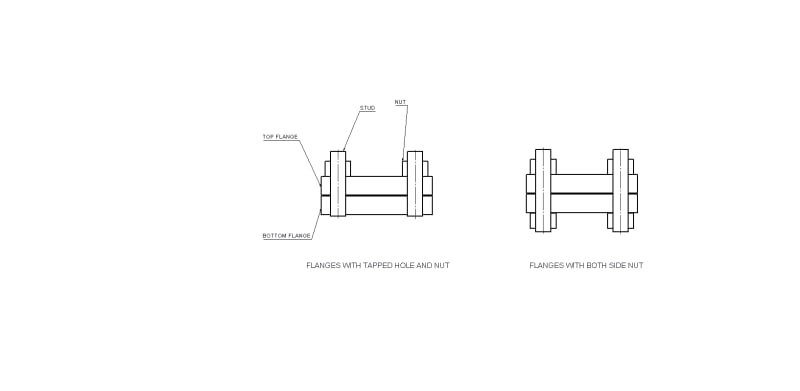skengg
Mechanical
- Jun 19, 2021
- 133
hey all,
let me first give detail of my query, i am designing a flange end valve fitting, it's DN 40 size CL-300 pressure rating. for body & bonnet round flange connection i have choice to either use tapped hole in flange with other side stud holded by nut or through hole in flanges with both side of stud holded by nuts.
so my question what's the difference between of both these flange bolting in perspective of bolting strength, pressure holding capability, stud as well as flanged fitting life cycle?
which one is suitable for which case?
can i use tapped hole for high pressure classes like cl-300 which have around 700psig working pressure?
thanks in advance.
let me first give detail of my query, i am designing a flange end valve fitting, it's DN 40 size CL-300 pressure rating. for body & bonnet round flange connection i have choice to either use tapped hole in flange with other side stud holded by nut or through hole in flanges with both side of stud holded by nuts.
so my question what's the difference between of both these flange bolting in perspective of bolting strength, pressure holding capability, stud as well as flanged fitting life cycle?
which one is suitable for which case?
can i use tapped hole for high pressure classes like cl-300 which have around 700psig working pressure?
thanks in advance.

